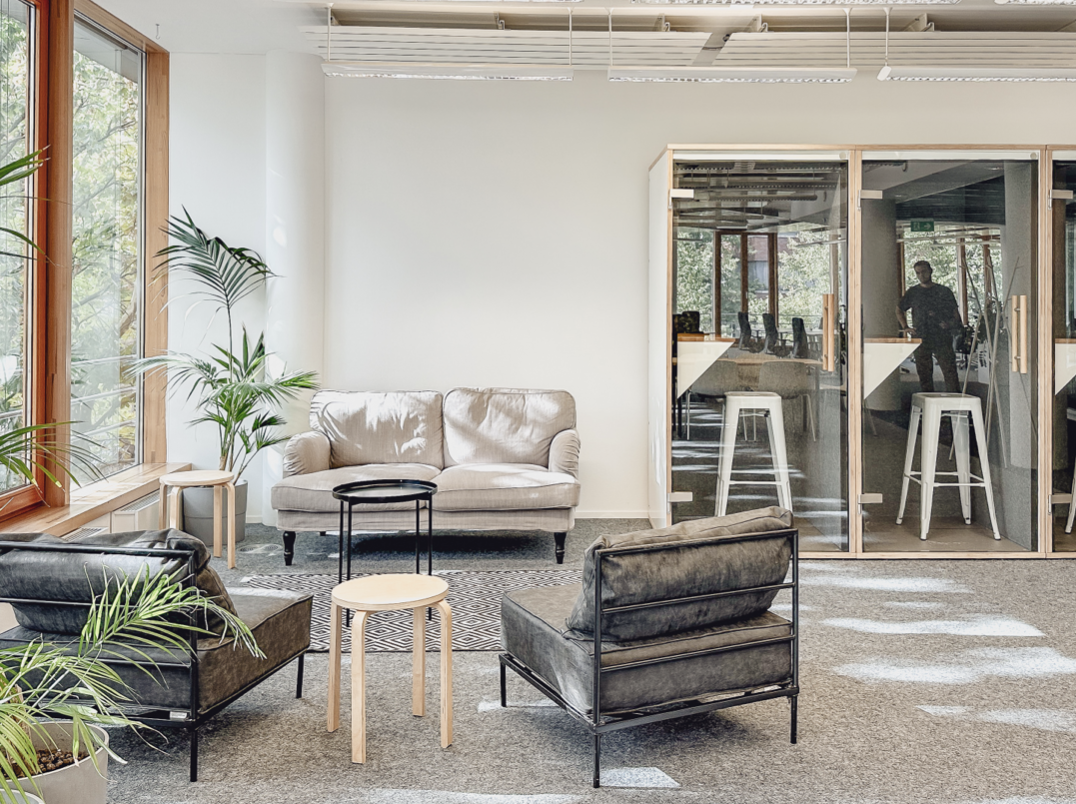
It's well-known that young professionals, creatives, and entrepreneurs rent spaces together to work. But co-working is taking the next step, and the signs of the times are pointing to co-living. More and more apartments and houses are turning into professionally managed shared living spaces, where sole proprietors, startup founders, and digital nomads not only pool their resources while working but also continue brainstorming and drafting business plans while cooking. The spirit of sharing is expanding, along with the offering of attractive shared living spaces for adults.
Creativity and Entrepreneurial Spirit
A pioneering project in Hamburg describes its co-living house as a place where young entrepreneurs and creatives live together to work on ideas:
"A home for entrepreneurial spirit and innovation. A living space where people with different skills and experiences meet and exchange ideas. A focal point for the local startup scene. A meeting place for international guests from the startup community."
Co-living is meant to inspire and promote community spirit. Those who dedicate most of their time to their own business are at risk of social isolation. Co-living actively counters this. This trend is being driven primarily by millennials. In doing so, they are not only breaking with traditional forms of work but also with traditional living and the notion that one's own home is the ideal to aspire to. Millennials want more. Economic growth is supposed to go hand in hand with personal growth. The manifesto of coliving.org states:
"Co-Living is for people who want a home environment that actively supports them in living with purpose and intention."
The project Quarters, opened in Berlin, offers a total of nine apartments with five rooms each on five floors. It was developed by the Medici Living Group, a PropTech company that implements innovative and digitized co-living concepts worldwide. The goal is to "bring together people who have something in common: creativity and fresh entrepreneurial spirit."

Small Rooms, Much Community
Sleeping takes place in small, fully furnished rooms. Common areas are shared. Typically, these include bathrooms, the kitchen, and the living room. However, some co-living houses also offer libraries, fitness rooms, or rooftop terraces, often including morning yoga or other services. In professionally organized co-living houses, operators often act as mediators. If conflicts arise or there is a crisis atmosphere, they intervene, even though the residents are all adults.
The individual rooms are usually terminable on short notice and commission-free. The minimum rental period is between one and three months. Payment is made according to the all-inclusive model. Fees for fast Wi-Fi, washing machine usage, cleaning of communal areas, and other incidental costs are covered. However, co-living is not cheap. In Germany, rents for a 10-15 sqm room range from 500 euros to around 1,500 euros.

Co-Living Becomes Professional
The idea of co-living is not new, as Brad Hargreaves recently told The Guardian. His company, Common, arranges shared rooms for adults.
"The biggest misunderstanding of co-living is people think it’s this totally new crazy and radical thing. It’s not. People have been living with roommates for a really long time. That’s how so many people in cities live. Really what we are doing is just taking this way of living and making it better, designing an experience for what people are already doing."
In America, co-living has a longer tradition. One reason for this is not only the search for a community of like-minded individuals but also the rising price of real estate – especially in city centers. The Rainbow Mansion in Silicon Valley is considered a pioneer, founded in 2006 by five NASA engineers. Since then, the residents of their villa have regularly organized pitch nights and hackathons or invited renowned entrepreneurs for private lectures. The Embassy, one of the first co-living projects from San Francisco, has now expanded as far as Costa Rica. And companies like Pure House, Open Door, Common, Tech Farm, or The Collective are following suit. With financial backing, they expand the market and professionalize co-living. Because demand is rising. In recent years, the number of 18- to 30-year-olds living in shared accommodations has almost doubled.
Pioneers on European soil can be found in the Copenhagen Nest. 21 entrepreneurs live in four apartments, each with a living kitchen, two bathrooms, and access to communal areas and the garden with the barbecue station. Established also are the Spanish Surf Office, Casa Netural in Italy, Hus24 in Sweden, Zagreb Cohousing in Croatia, or the Changemakers Residence in Austria.
Co-Living in Germany
In the Berlin district of Charlottenburg, rent24 will soon open the largest co-living project in the country to date. Next year, the company also plans to present a whole campus in Hamburg. On a former factory site, over 7,500 sqm of offices and micro-apartments with "encounter areas" are to be created. The goal is to create living spaces that are "cheaper than hotels" and "more flexible than a private apartment." The Düsseldorf Business WG targets a similar clientele, young businessmen and businesswomen who are often on the go, want to remain flexible, but not alone. Platforms like Airbnb or StartupBnB now offer special search options for business travelers who are not only looking for a room but also a community.

Room for Growth
The concept of the Medici Living Group, the developer of Berlin's Quarters, seems to be paying off. According to the company, in 2016, revenue increased by 32% compared to the previous year, reaching almost 5.8 million euros. That co-living is a lucrative business has also been recognized by WeWork, which is entering the market with WeLive. WeLive rents apartments, furnishes them, and sublets them on a monthly basis; access to common areas and the "community" included. According to WeWork founder Adam Neumann, the company expects 34,000 WeLive members next year. In 2018, annual revenue is expected to reach $636 million. Accordingly, there is great interest among international real estate developers in investing in co-living. However, there is no danger of getting in each other's way, say developers. There is currently a tremendous amount of room for growth.






